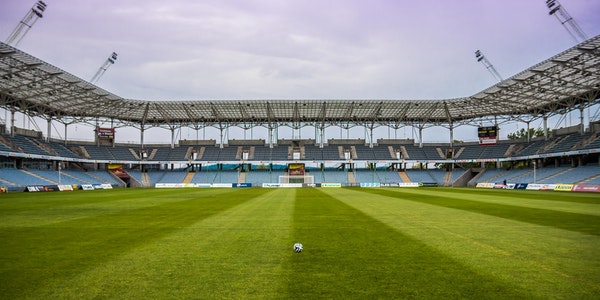(5) Safety and Visibility Enhancements:
Optimized Lighting for Safety:
Detail: Adaptive lighting strategies prioritize safety by ensuring sufficient illumination levels for pathways, emergency exits, and critical areas based on changing environmental factors.
Impact: Improves visibility and reduces potential hazards during inclement weather conditions or low-light situations, enhancing overall venue safety and security.
Example: In outdoor venues, smart lighting can increase brightness and adjust directional lighting to minimize shadows and enhance visibility during nighttime events or adverse weather conditions, promoting a secure environment for attendees and participants.
Adaptive lighting solutions for weather and time of day in venue settings leverage smart technologies to optimize energy efficiency, enhance visibility, and maintain consistent illumination quality across changing environmental conditions. By integrating weather-responsive controls, time-of-day scheduling, environmental sensors, and energy-efficient strategies, venues can achieve operational efficiency, reduce costs, and provide safe, comfortable environments for various activities and events. As smart lighting continues to evolve, its ability to adapt dynamically to environmental factors will play a pivotal role in enhancing user experiences, supporting sustainable practices, and optimizing resource management in venue operations.
Future Prospects:
Emerging technologies (e.g., Li-Fi)
Exploring Innovative Solutions for Enhanced Connectivity and Efficiency
- Introduction to Li-Fi Technology:
Light Fidelity (Li-Fi):
Detail: Li-Fi utilizes visible light communication (VLC) to transmit data through LED light bulbs, offering high-speed wireless internet connectivity.
Impact: Enhances connectivity within venues by leveraging existing lighting infrastructure, providing secure, low-latency communication for IoT devices, and supporting bandwidth-intensive applications.
Example: In a stadium, Li-Fi enables spectators to access real-time statistics, replays, and interactive content via their smartphones, enhancing the fan experience during live events.
- Integration with Smart Lighting Systems:
Synergistic Applications:
Detail: Li-Fi technology integrates seamlessly with smart lighting systems to provide dual functionality—illumination and data transmission—within the same infrastructure.
Impact: Optimizes space utilization, reduces installation complexity, and enhances operational efficiency by consolidating lighting and communication functionalities.
Example: Smart LED fixtures equipped with Li-Fi capabilities support advanced features like precise indoor navigation, location-based services, and personalized content delivery during events.
- Advancements in Wireless Connectivity:
Beyond Wi-Fi:
Detail: Li-Fi complements existing Wi-Fi networks by offering higher data speeds, improved security (due to the physical limitations of light), and immunity to electromagnetic interference.
Impact: Addresses bandwidth demands of IoT devices, enhances network capacity, and ensures reliable connectivity in densely populated venues.
Example: During major concerts or conferences, Li-Fi networks can handle large volumes of data traffic from connected devices without compromising performance, supporting seamless digital interactions and multimedia streaming.
- Applications in Augmented Reality (AR) and Virtual Reality (VR):
Immersive Experiences:
Detail: Li-Fi supports AR/VR applications by delivering low-latency, high-bandwidth connectivity required for real-time interaction and content synchronization.
Impact: Enhances audience engagement by enabling immersive experiences such as AR-enhanced tours, interactive gaming, and virtual seat upgrades during events.
Example: AR overlays integrated with Li-Fi-enabled smart lighting can provide real-time player stats or historical insights directly to spectators’ AR glasses, enriching their viewing experience at sports venues.
- Future Trends and Integration Possibilities:
Evolution of Smart Venues:
Detail: Li-Fi represents a pivotal advancement in smart venue technologies, supporting evolving demands for connectivity, interactivity, and operational efficiency.
Impact: Promotes innovation in venue management, enhances digital infrastructure resilience, and fosters new revenue streams through enhanced digital services and partnerships.
Example: As Li-Fi adoption grows, venues can explore partnerships with telecommunications providers and tech companies to deploy advanced connectivity solutions that cater to diverse user needs and preferences.
Li-Fi technology exemplifies the convergence of lighting innovation and digital connectivity, offering venues transformative capabilities in data transmission, connectivity, and user engagement. By integrating Li-Fi with smart lighting systems, venues can enhance operational efficiency, deliver immersive experiences, and meet the growing demands for high-speed, secure wireless connectivity. As Li-Fi continues to evolve alongside advancements in IoT, AR/VR, and digital infrastructure, its role in shaping the future of smart venues as hubs of connectivity and innovation will remain pivotal, driving enhanced user experiences and operational excellence in venue management.
Predictions for the next decade
Predicting the future of technology over the next decade involves considering current trends, emerging innovations, and societal shifts. Here are several predictions across various domains that could shape the next decade:
Technology and Innovation
- Artificial Intelligence (AI):
AI will become increasingly integrated into everyday life, powering autonomous systems, personalized services, and decision-making across industries such as healthcare, finance, and transportation.
Predictive analytics and AI-driven automation will optimize processes, reduce costs, and enhance efficiency in businesses and public services.
- Internet of Things (IoT):
IoT devices will proliferate, connecting everything from smart homes and cities to industrial machinery and wearable technology.
Enhanced connectivity and data analytics capabilities will drive innovations in smart infrastructure, energy management, and environmental monitoring.
- 5G and Connectivity:
5G networks will enable faster data speeds, lower latency, and greater connectivity density, facilitating advancements in augmented reality (AR), virtual reality (VR), and real-time communications.
Expanded coverage and adoption of 5G will support the growth of smart cities, autonomous vehicles, and telemedicine.
Healthcare and Biotechnology
- Precision Medicine:
Advances in genomics and personalized medicine will lead to targeted therapies and treatments tailored to individual genetic profiles.
AI and machine learning will play a crucial role in analyzing large datasets to identify disease patterns and predict patient outcomes.
- Biotechnology and CRISPR:
Continued advancements in CRISPR gene-editing technology will revolutionize disease treatment and agriculture.
Ethical considerations and regulatory frameworks will evolve alongside technological capabilities.
Environment and Sustainability
- Renewable Energy:
Accelerated adoption of renewable energy sources such as solar and wind power will drive the transition towards sustainable energy systems.
Energy storage solutions and smart grid technologies will optimize energy distribution and utilization.
- Climate Change Mitigation:
Innovative technologies and policies will focus on carbon capture, greenhouse gas reduction, and sustainable agriculture practices to combat climate change.
Public awareness and corporate responsibility will drive investments in eco-friendly solutions and circular economies.
Society and Culture
- Remote Work and Digital Nomadism:
Flexible work arrangements and digital collaboration tools will redefine traditional office spaces, promoting remote work and global workforce mobility.
Cities and regions will adapt to accommodate digital nomads and remote workers, influencing urban planning and lifestyle trends.
- Education and Lifelong Learning:
Education will increasingly embrace digital platforms, adaptive learning technologies, and lifelong skill development.
Virtual reality (VR) and augmented reality (AR) will transform classroom experiences and training programs, making education more accessible and interactive.
Ethics and Governance
- Ethical AI and Data Privacy:
Regulations and ethical guidelines will evolve to address concerns around AI bias, data privacy, and algorithmic transparency.
Responsible AI frameworks will prioritize fairness, accountability, and the ethical use of AI technologies in decision-making processes.
The next decade promises transformative advancements across technology, healthcare, sustainability, and societal norms. While predicting specific outcomes is challenging, trends towards connectivity, automation, sustainability, and ethical considerations will shape how we innovate, work, live, and interact in the coming years. Embracing these developments with a focus on responsible innovation and inclusive growth will be crucial for navigating the opportunities and challenges of the future.
I. Challenges and Considerations
Initial Investment and Costs:
High upfront costs vs. long-term savings
Strategic Considerations for Businesses and Consumers
- Initial Investment Challenges:
Upfront Expenditure:
Detail: Adopting advanced technologies often requires significant initial capital investment for equipment, infrastructure, and implementation.
Challenge: High upfront costs can strain budgets and deter initial adoption, especially for smaller businesses or consumers with limited resources.
Example: Purchasing energy-efficient appliances or upgrading to renewable energy solutions involves substantial upfront expenses but promises long-term savings.
- Long-Term Financial Benefits:
Cost Reduction Over Time:
Detail: Advanced technologies typically offer lower operational costs, reduced maintenance requirements, and energy savings over their lifespan.
Advantage: Long-term financial benefits outweigh initial costs, providing a positive return on investment (ROI) and improving financial stability.
Example: Installing solar panels results in lower electricity bills and potential revenue from selling excess energy back to the grid, offsetting initial installation costs.
- Energy Efficiency and Sustainability:
Environmental Impact:
Detail: Investments in energy-efficient technologies contribute to sustainability goals by reducing carbon footprint and resource consumption.
Advantage: Beyond financial savings, businesses and consumers benefit from enhanced environmental stewardship and compliance with regulatory standards.
Example: Transitioning to LED lighting not only lowers electricity bills but also reduces greenhouse gas emissions and supports corporate sustainability initiatives.
- ROI and Payback Period:
Calculating Returns:
Detail: Assessing ROI involves evaluating upfront costs against projected savings, considering factors such as energy efficiency, operational efficiencies, and potential revenue streams.
Advantage: Understanding payback periods helps justify investments and informs strategic decision-making for long-term financial planning.
Example: Upgrading to energy-efficient HVAC systems may have a payback period of 3-5 years, after which ongoing savings contribute positively to the bottom line.
- Risk Management and Planning:
Mitigating Financial Risks:
Detail: Businesses and consumers should consider potential risks, such as technological obsolescence, market fluctuations, and regulatory changes, when evaluating long-term investments.
Advantage: Strategic planning and risk mitigation strategies help mitigate uncertainties and optimize the financial benefits of technology investments.
Example: Investing in cloud computing services offers scalability and operational flexibility but requires careful planning to manage data security and compliance risks.
Navigating the balance between high upfront costs and long-term savings requires careful consideration of financial implications, environmental impacts, and strategic objectives. While initial investments in advanced technologies may pose challenges, the promise of reduced operational costs, improved efficiency, and sustainability benefits over time can outweigh the upfront expenditure. By evaluating ROI, understanding payback periods, and implementing risk management strategies, businesses and consumers can make informed decisions that align with their financial goals, enhance operational resilience, and contribute to a sustainable future.
Funding and financing options
Strategies for Overcoming Initial Costs and Maximizing ROI
Investing in advanced technologies often requires overcoming high upfront costs. Here are several funding and financing options businesses and consumers can consider:
- Traditional Bank Loans:
Overview: Securing a loan from a bank or financial institution is a common method to fund technology investments.
Advantages: Offers flexibility in loan terms, interest rates, and repayment schedules tailored to business or personal financial needs.
Considerations: Requires a strong credit history, collateral, and a detailed business plan or justification for the investment.
- Government Grants and Subsidies:
Overview: Many governments offer grants, subsidies, or tax incentives to promote technology adoption, especially in renewable energy, energy efficiency, and research and development (R&D) initiatives.
Advantages: Provides non-repayable funds or reduced tax liabilities, lowering the initial investment burden and encouraging innovation.
Considerations: Eligibility criteria, application processes, and compliance requirements vary by region and sector.
- Equipment Leasing:
Overview: Leasing equipment allows businesses to access technology without a large upfront payment.
Advantages: Preserves capital, spreads costs over time, and provides flexibility to upgrade equipment as technology evolves.
Considerations: Total costs may be higher over the long term compared to outright purchase, and leasing terms should align with expected equipment lifespan and usage.
- Vendor Financing Programs:
Overview: Some technology vendors offer financing programs or equipment financing agreements (EFAs) to facilitate purchases.
Advantages: Simplifies procurement by bundling equipment and financing into a single package, often with competitive rates and flexible terms.
Considerations: Terms and conditions vary by vendor, and businesses should compare offers to ensure favorable terms and total cost of ownership.
- Crowdfunding and Peer-to-Peer Lending:
Overview: Crowdfunding platforms and peer-to-peer lending networks enable businesses and individuals to raise funds from a large pool of investors.
Advantages: Access to capital without traditional banking requirements, potential for broader community support, and diverse funding sources.
Considerations: Requires compelling project or business proposition, marketing efforts to attract investors, and fulfillment of campaign obligations.
- Energy Performance Contracts (EPCs):
Overview: EPCs are agreements where an energy service company (ESCO) finances, installs, and maintains energy efficiency upgrades.
Advantages: Upgrades are paid for through cost savings generated by energy efficiency improvements, minimizing upfront costs for the client.
Considerations: Long-term contracts typically involve shared savings or guaranteed savings arrangements, with contractual terms tailored to project scope and performance metrics.
(To Be Continued)





